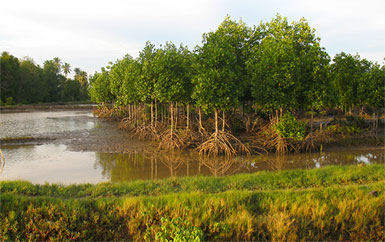Since there’s more than enough to be depressed about in the world today, we’re ending the year with some projects that give us hope.
In September, more than 30 countries signed the NY Declaration on Forests, which for the first time, puts a hard deadline on eliminating deforestation. The US, Canada and the EU are among the signatories, agreeing to cut deforestation in half by 2020 and fully by 2030. They also agreed to restore 1 million acres of degraded land over that time.
Africa is leading, assisted by the World Bank, UK government and nonprofits like Oxfam. Tanzania has restored 1.2 million acres, and efforts have been so successful in Ethiopia, that they pledge to restore 37 million acres by 2030. Other countries’ pledges: Democratic Republic of the Congo (20 million); Uganda (6.2 million acres); Colombia (2.5 million); Guatemala (3 million hectares); and Chile (247,000).
Read our article, Namibia Models Economy Benefits And Wildlife Protection.
In Indonesia, 10 years after the tsunami, villagers are restoring the very mangrove forests and coastal ecosystems that could have prevented much of the disaster that killed over 200,000 people.
So far, 70,000 mangroves have been planted in the "Green Coast" project using microcredit finance. Birds have returned and the surrounding water is home to shrimp and crabs. Even green turtles are slowly returning. The country’s new President, Joko Widodo, campaigned on a commitment to reforest 2 million hectares of degraded land a year.

At this month’s Climate Summit in Peru, Initiative 20×20 launched – an effort to restore 50 million acres of land in Latin America and the Caribbean by 2020. It’s part of the Bonn Challenge, a global commitment to restore 370 million acres of land around the world by 2020, led by the World Resources Institute.
In the US, food companies are joining to improve agricultural practices on 50 million acres of farmland by 2020, preserving wild habitats and lowering emissions from agriculture.
In other words, more people understand that we’ve got to restore the earth’s land (and water).
Over the past 20 years, protected zones have expanded substantially and as of 2010, take up 12.7% of the earth’s land – the size of Russia.
After traveling the world for eight years, photojournalist Sebastião Salgado captured the most remote, pristine places left on earth, to show people that despite the havoc, "some 46% of our planet is still as it was in the time of Genesis." His book Genesis, is a compilation of the photos – a photographic homage to our planet in its natural state.
Here are some of the photos:
